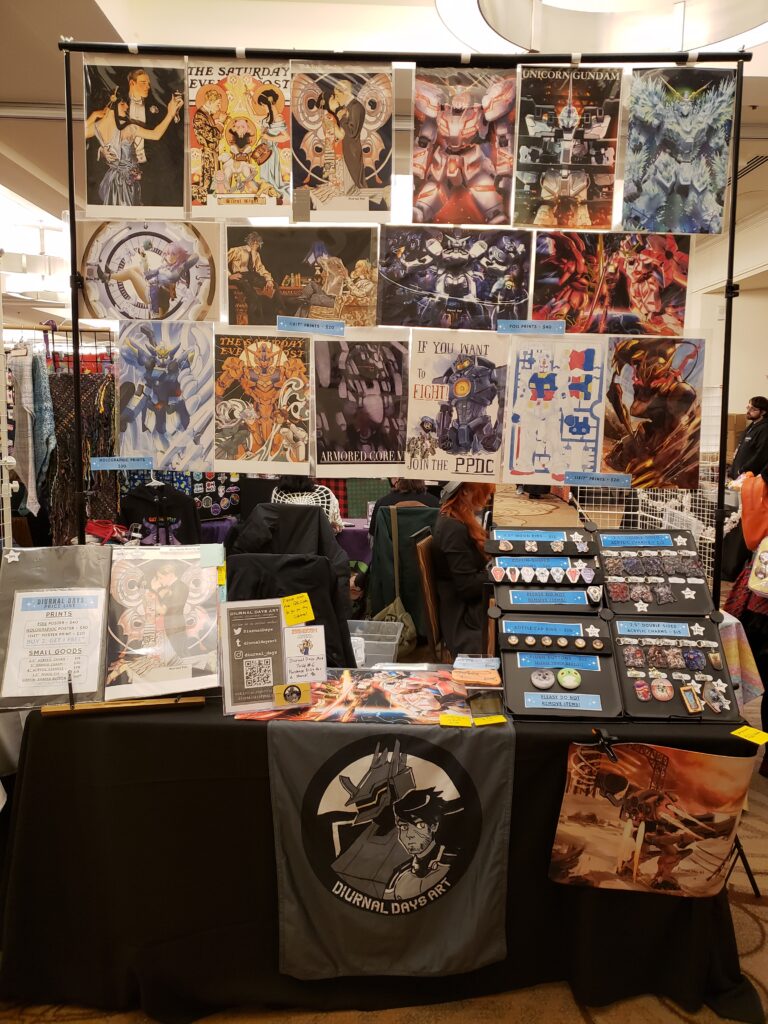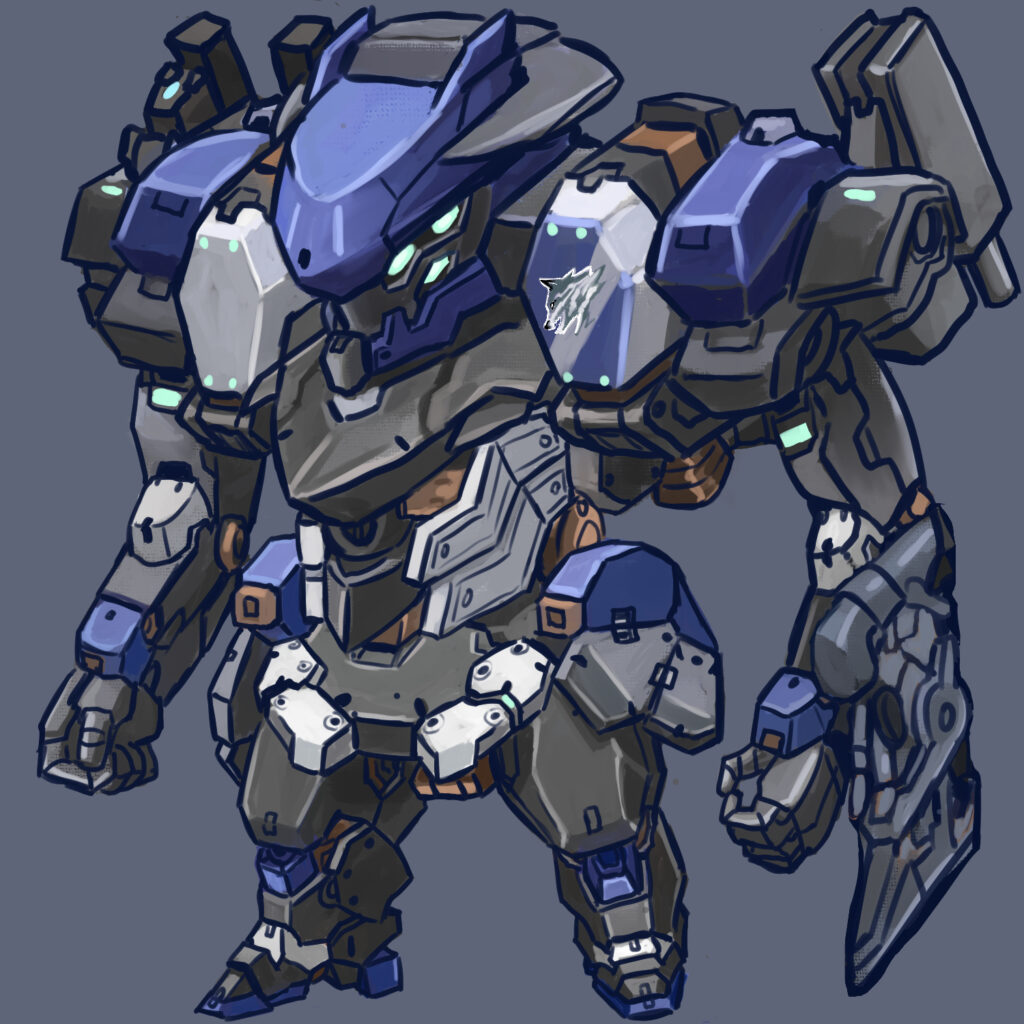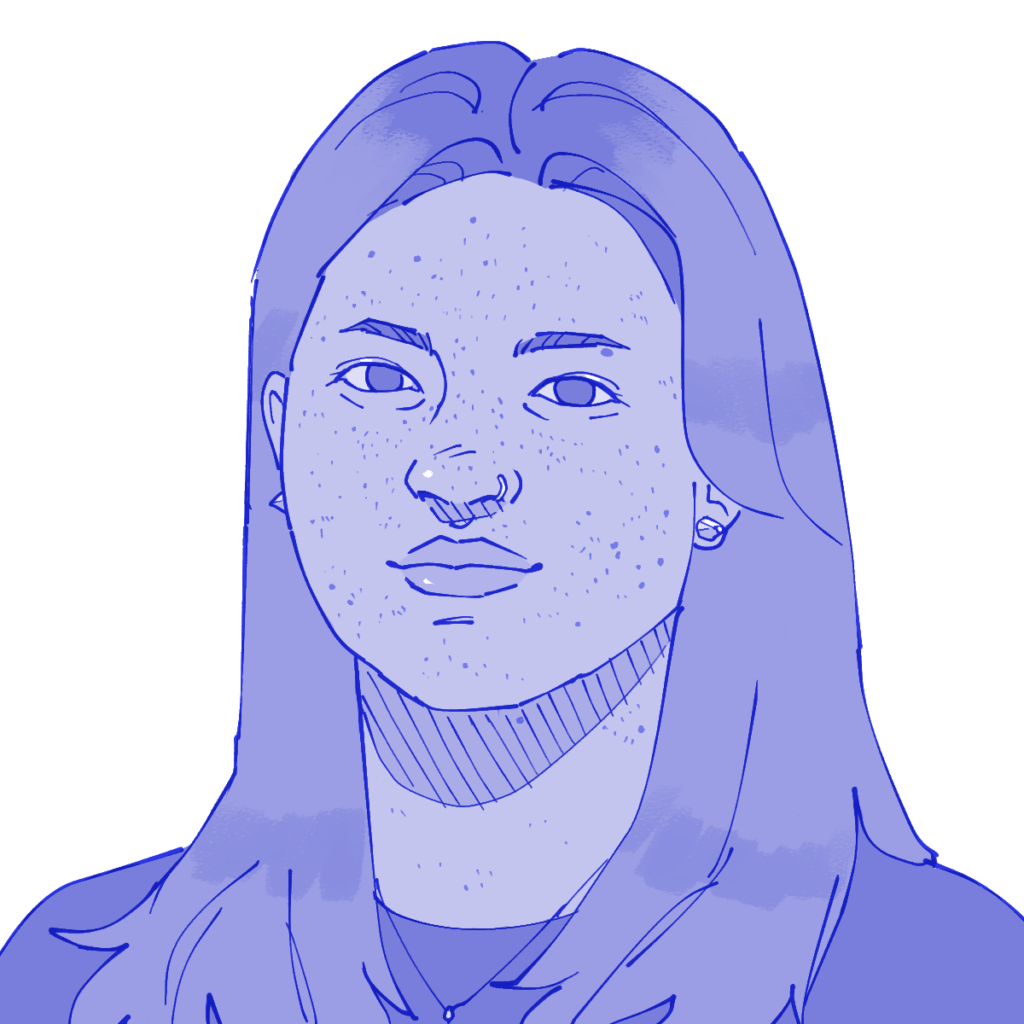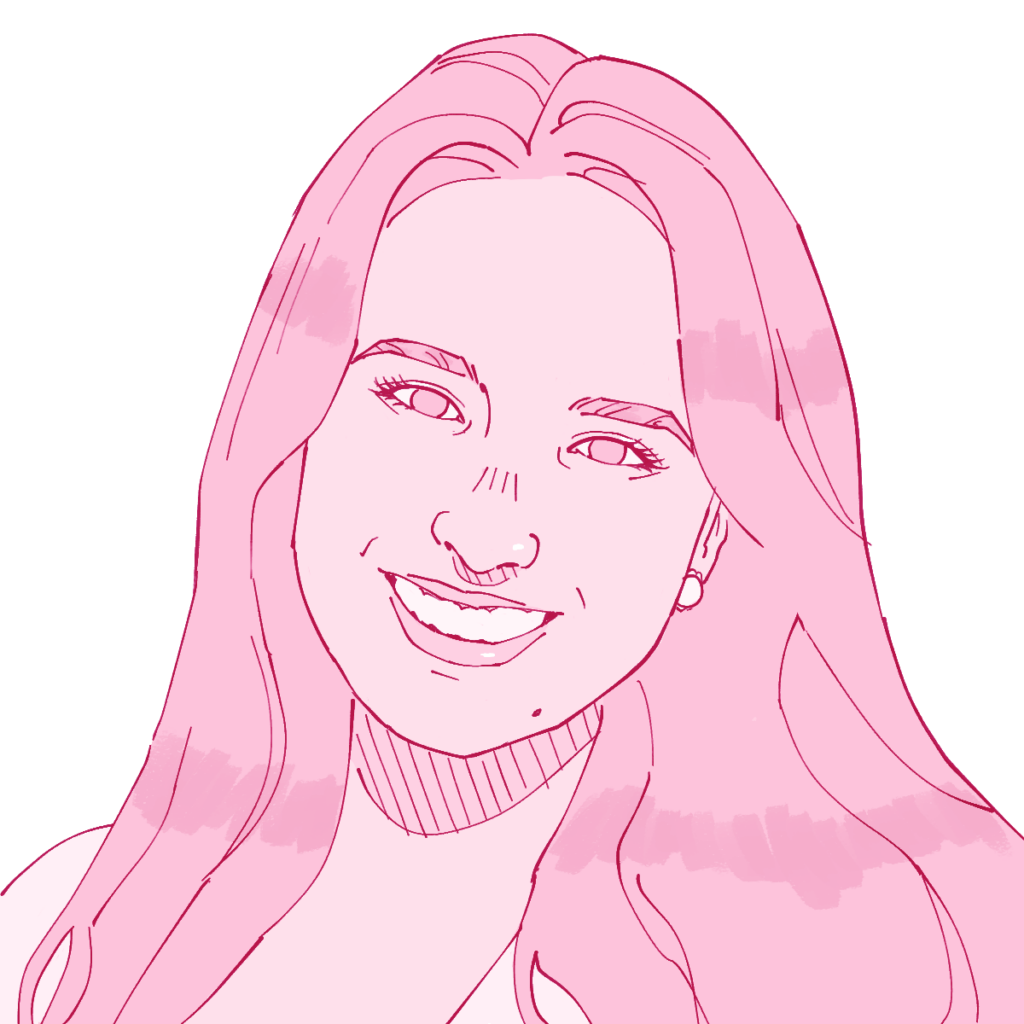This week’s column is a day late because I’ve been tabling at Isshocon, a new 3-day anime convention located near us in Novi Michigan! So far it’s been going fairly well considering that it only has fewer than two thousand attendees — I’ve made more money than at Motor City Comic Con Fall for a much less expensive table, though my work is much better geared to anime conventions. Here’s a picture of my table:

The main topic of this week’s column is going over some work-in-progress pictures from my recent drawings, which has been on my mind because the application for Fanime Con (a large anime convention that happens in San Jose, CA on Memorial Day weekend) required a signed work-in-progress picture to weed out AI “artists” and art thieves. I’m in a group chat with a bunch of other artists who sell at conventions and seeing everyone else’s progress pictures was really interesting for seeing how other artists work. I won’t use the work-in-progress images I used for my Fanime application to keep it private, so I’ll instead go over a chibi mecha design I drew last year with WIP screenshots I took during the process.
My typical digital working process starts with “blocking” out the drawing as a color sketch, working more on getting the general idea down rather than having perfect proportions or coloring.

As I work on this base colors sketch, I freely use the lasso tool and eraser to resize and edit parts I don’t like in addition to working more with the default oil paint brush tool I use for my work.

Once I have a baseline I’m happy with, I start doing lineart from the top to the bottom on another layer, working more on the rendering and polish as the lineart solidifies what I want the drawing to look like.

Compare with my finished drawing:

Would you guys like to see me do more breakdowns/work-in-progress sequences of my drawings in the future? I’d love to know if you do!









